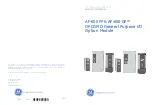
Communications configuring
3-244
System- and communication configuring D7-SYS - SIMADYN D
Edition 12.2003
3.21.3
Output formats of the message evaluation block MSI
3.21.3.1
Structure of an error- or alarm message
The message evaluation block MSI has four inputs to select the format:
•
input SNV
•
input STM
•
input STC
•
input SSF
The message format is important for the receiver of a message and its
interpretation.
Input STC defines the message text length. It is set to a constant length
(60 characters) using STC = 1. If a message text is shorter than the
maximum length or is not available, it is filled with blanks. The advantage
is the constant number of data which is to be transferred. This connection
has no effect on the remaining structure of the message and the
message type description.
Inputs SNV, STM and SSF are evaluated once during the initialization
phase and then define the format of the messages output. The messages
are output at the channel, specified at input AT at the data interface
specified at input CTS.
3.21.3.2 Overview
of
the message formats
The spontaneous ID has a constant value of 0 and is of no significance.
The sequence number is provided for reasons of reliability and counts the
number of messages transmitted so that the receiver can identify which
messages have been lost. The sequence number lies in the range from
0-255. When the sequence number has reached the maximum value of
255, when the next message is transmitted, the minimum value 0 is used.
Essentially a differentiation is made between the standardized and
hexadecimal formats. For a standardized format, the individual values are
transferred in the IEEE 754 or ISO 646 standard, which defines a
normalized 32-bit floating point notation. The messages, both in the
standardized as well as in the hexadecimal format, include a message
type description which provides information about the format, selected by
the initialization inputs and other parts of the message. The message
type description is a bit vector, which should be interpreted as follows:
•
Bit 0: If this bit is set, message numbers are output (copy of input
SNV).
•
Bit 1: If this bit is set, a message text is output (copy of input STM,
unless the message is empty).
General
Message text
length
Message text
format
Spontaneous ID
Sequence number
Message type
description
















































